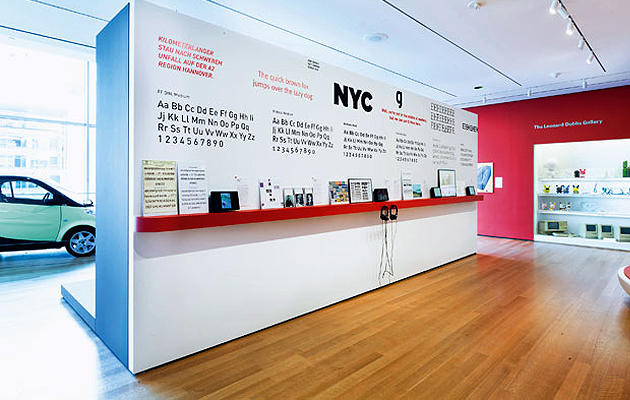|
|
||
|
The design and architecture department at the Museum of Modern Art in New York is the acme of design galleries, the reason that modern design and architecture are exhibited at all. When it rehangs its collection,it in some sense rehangs the history of modern design and it is therefore impossible for a student of the field to ignore. There is a tension, however, between the instability and youth of the canon of modern design, and the feeling that inclusion in MOMA’s collection is a benediction that lifts an object to exalted status. In its most recent rehang, MOMA’s curators make a brutal, subversive interpretation of the trajectory of industrial design as a cultural practice. I just can’t work out whether or not they intended to do this. The design and architecture department in the Yoshio Taniguchi-designed building has two separate galleries on the same floor, one with products, furniture and graphics, the other (smaller and with a more studious air) dedicated to architecture. The thing that strikes you most immediately about the new hang is that the design gallery is broader; it gives a lot of weight to type (rather than graphic) design and has a better selection of objects that are not chairs. The product design gallery begins, as it did before, with an island podium of objects broadly reflecting recent design. The selection includes some undeniable 1990s classics. Tejo Remy’s You Can’t Lay Down Your Memory chest of drawers for Droog is surely an essential choice, as is Richard Hutten’s Table Chair. Often, the world of Droog and the accompanying dawn of “conceptual” design are exhibited as having to do with design process rather than the aesthetic of the outcome. But, by juxtaposing them here with three pieces by the late Japanese designer Shiro Kuramata, MOMA emphasises a postmodern formalism – the sense of an interest in unstable, archetypal forms of furniture. This is a subtle, but perceptive, distinction. Surrounding this podium is a new and interesting exhibition about contemporary type design. The typefaces are selected to represent “typography’s digital phase”, but what unites them is a certain romanticism in looking back at naive or historic typography. Jonathan Barnbrook’s gothic-looking Mason, for example, is inspired by 19th-century Russian letterforms. The message is certainly that type designers care a lot more about history than product designers. Moving on, you get the main, chronological story of modern product design, beginning with art nouveau, moving through functionalism (“Mind, Body, Machine”), then a special section on plywood (with work by Alvar Aalto and Tapio Wirkkala), and finally post-war consumerist design (“Backyard and Beyond”), which has surfboards, deck chairs and so on. This trajectory is brutally honest. Broadly, it tells the visitor that product design went from being a bourgeois preoccupation with interiors to a brief moment of industrialised idealism, and ended up whetting, and sating, the appetites of the first world leisure economy. There’s even a video showing how designers working with plywood helped design warplanes in the Second World War. Industrial design, MOMA seems to say, helps you slay your enemies and then celebrate your hard won freedom with a barbecue in the backyard. The architecture galleries are, by contrast, not nearly so much fun. There’s a sense of leaden pedagogy and such a lack of interpretation that anyone but a specialist will be mostly confused. The first exhibit is quite bold, though: a 1:1 Louis Sullivan drawing of a decorative facade detail, next to a video of a project by Asymptote Architecture, the designer of Abu Dhabi’s Yas Hotel. I think Asymptote has more to gain from this comparison than Sullivan, but it illustrates how MOMA attempts to substantiate and dignify certain parts of modern architectural practice by placing it in a historical continuum. The collection throws up some curiosities that vary in their interest. The Rasch brothers’ 1920s drawings of extraordinary suspended structures and bridges were a brilliant surprise to this critic, but the attempt to make Jean Tschumi (Bernard’s father) central to the history of modern urbanism seems overblown. The “Alternative Modernisms” section seems to be made up entirely of Austrian avant-gardists Haus-Rucker-Co, thereby reclaiming the term from exponents such as Smithsons, Team X and the like – more nuanced thinkers who are not mentioned here at all. It’s a good parlour game to visit and decide what you would have included or thrown out. The curators have enriched the narrative in the design galleries in an interesting, even subversive, way. But while the architecture gallery contains some great things, they remain of strictly specialist interest. Museum of Modern Art, New York |
Image Timothy Hursley
Words Kieran Long |
|
|
||


















